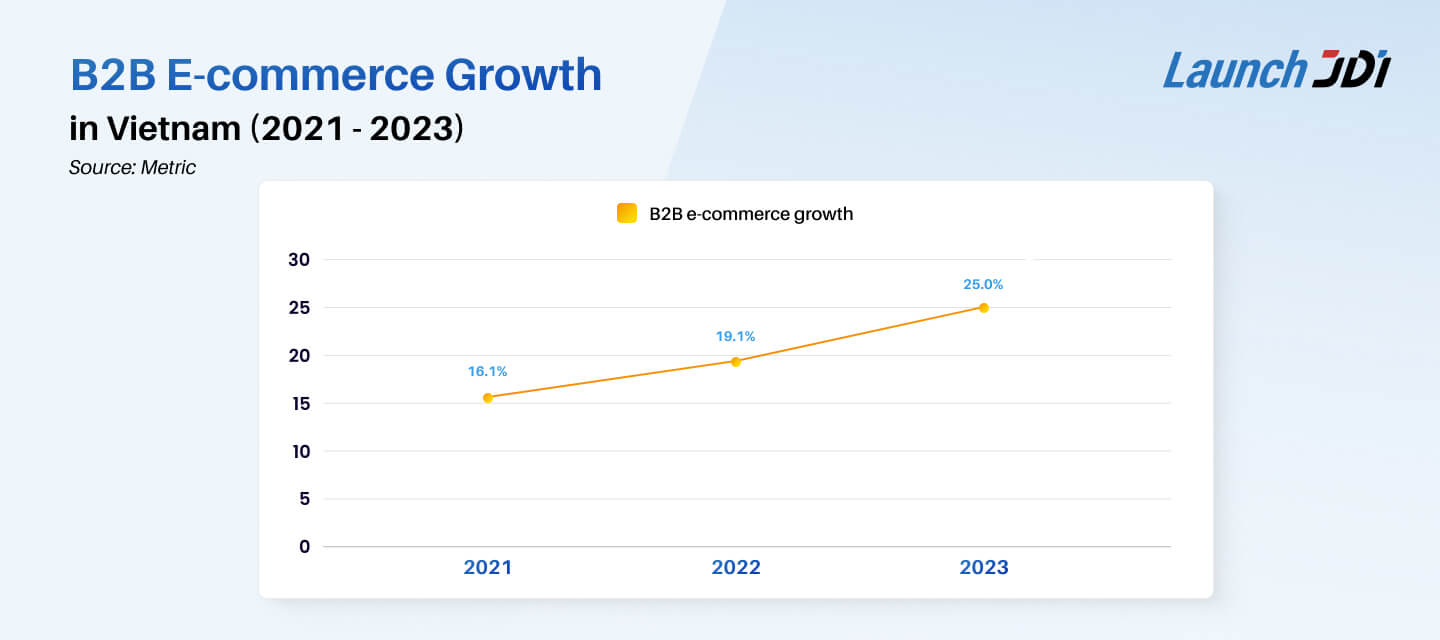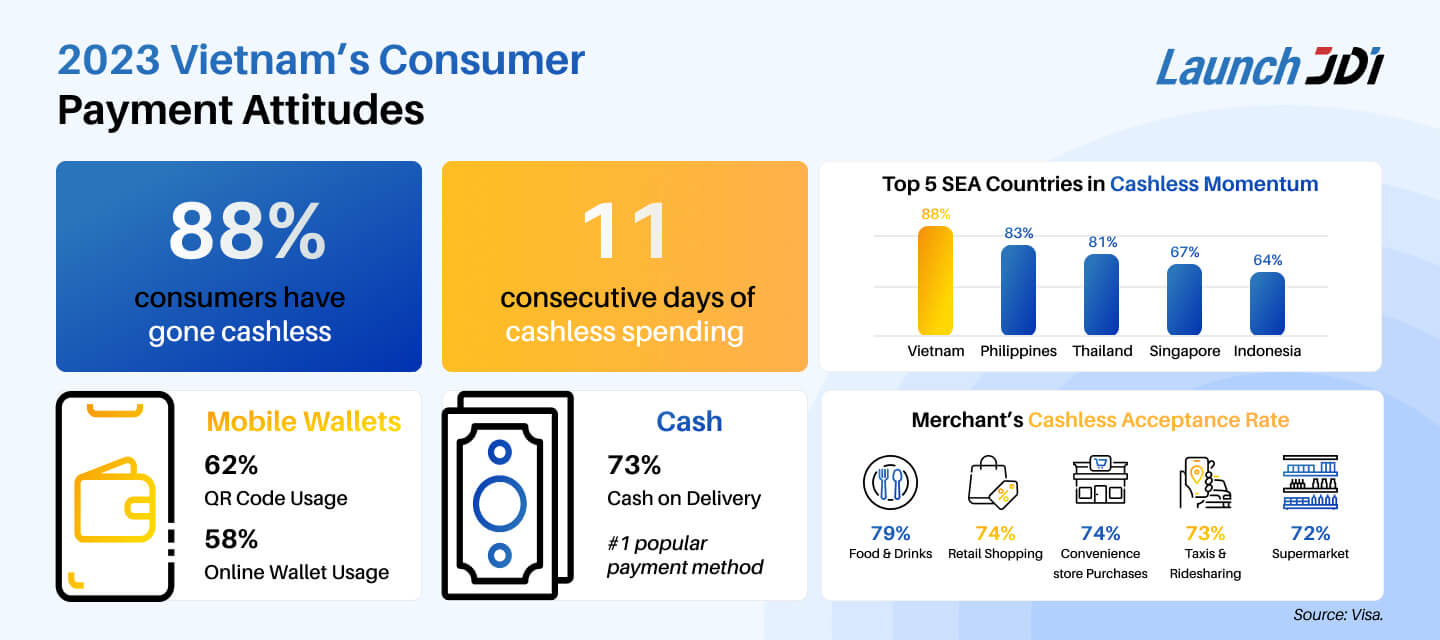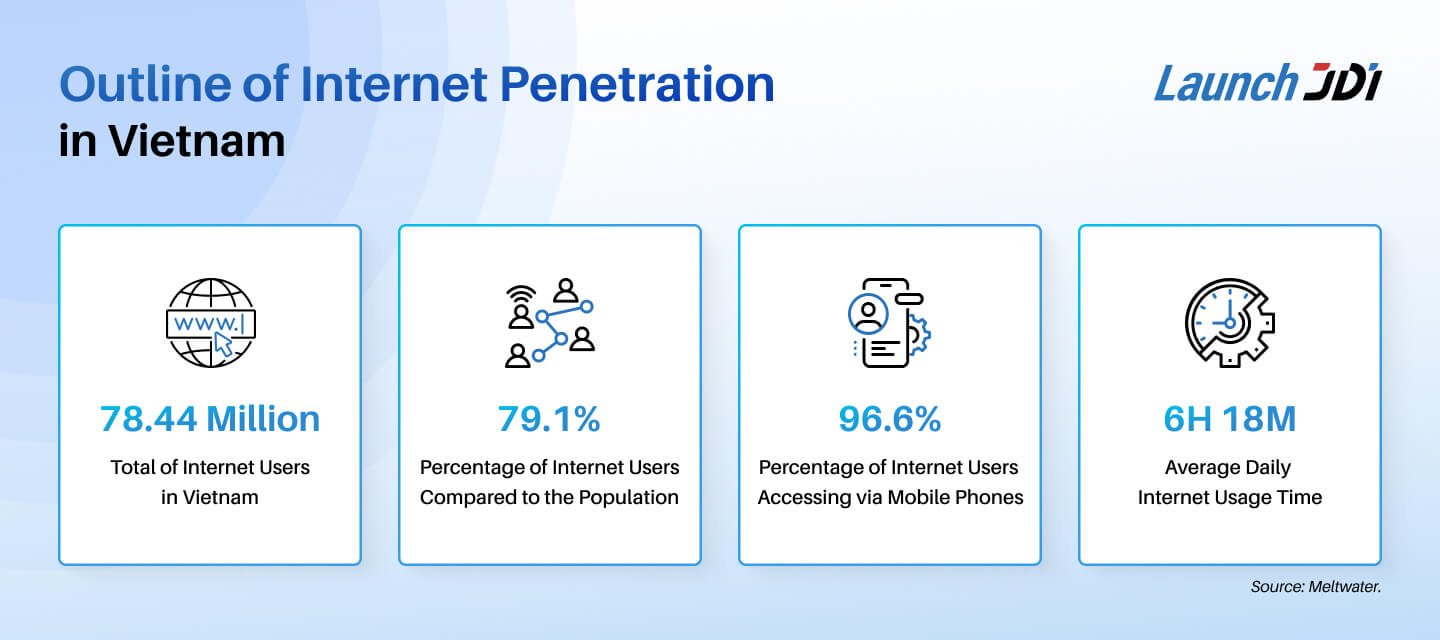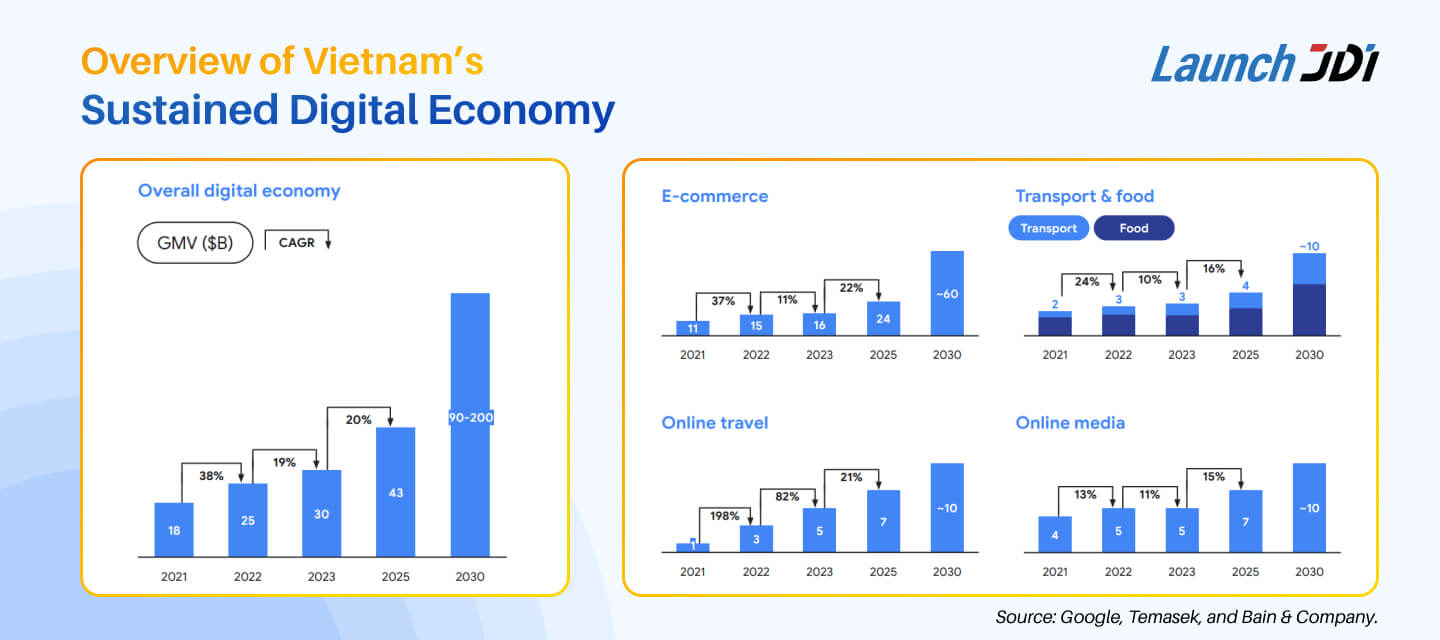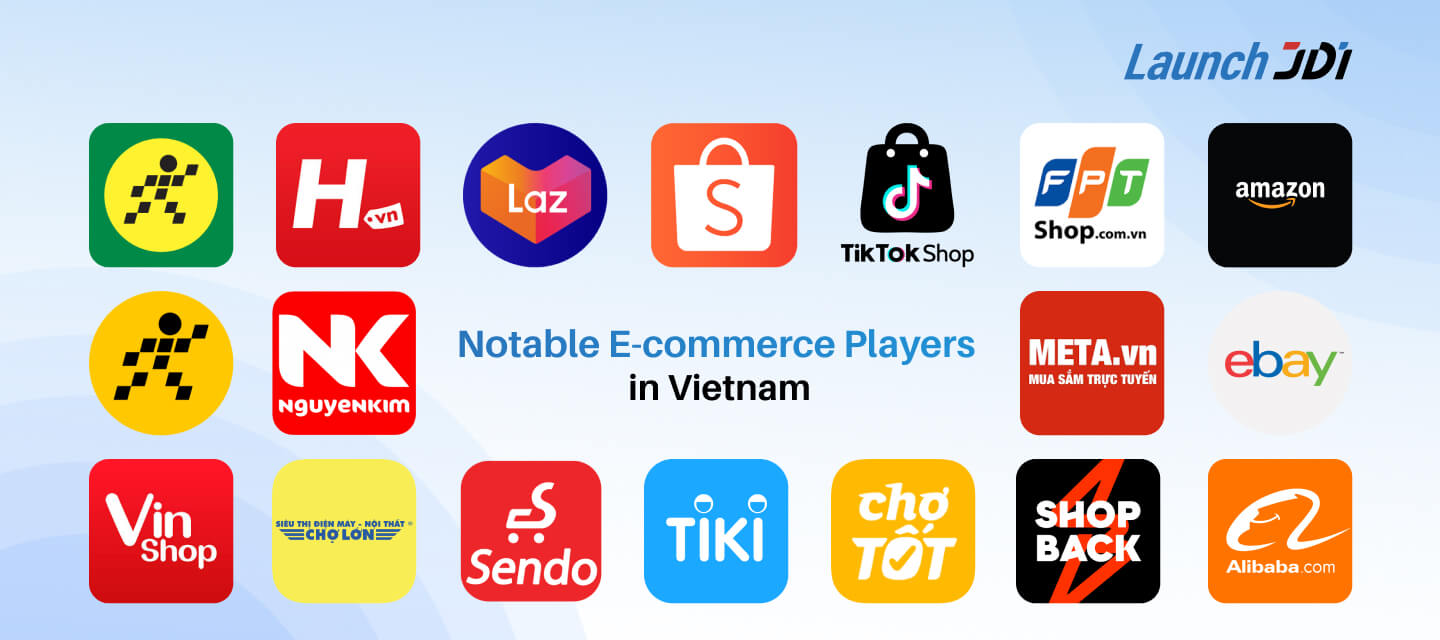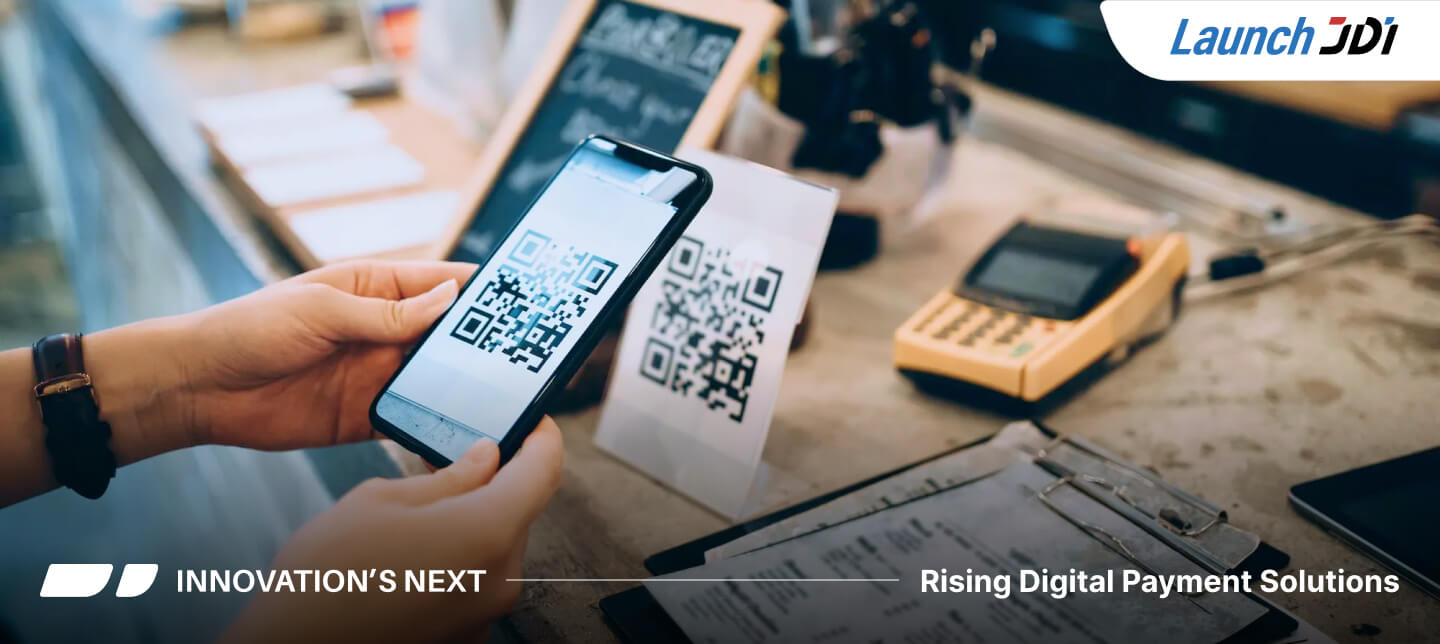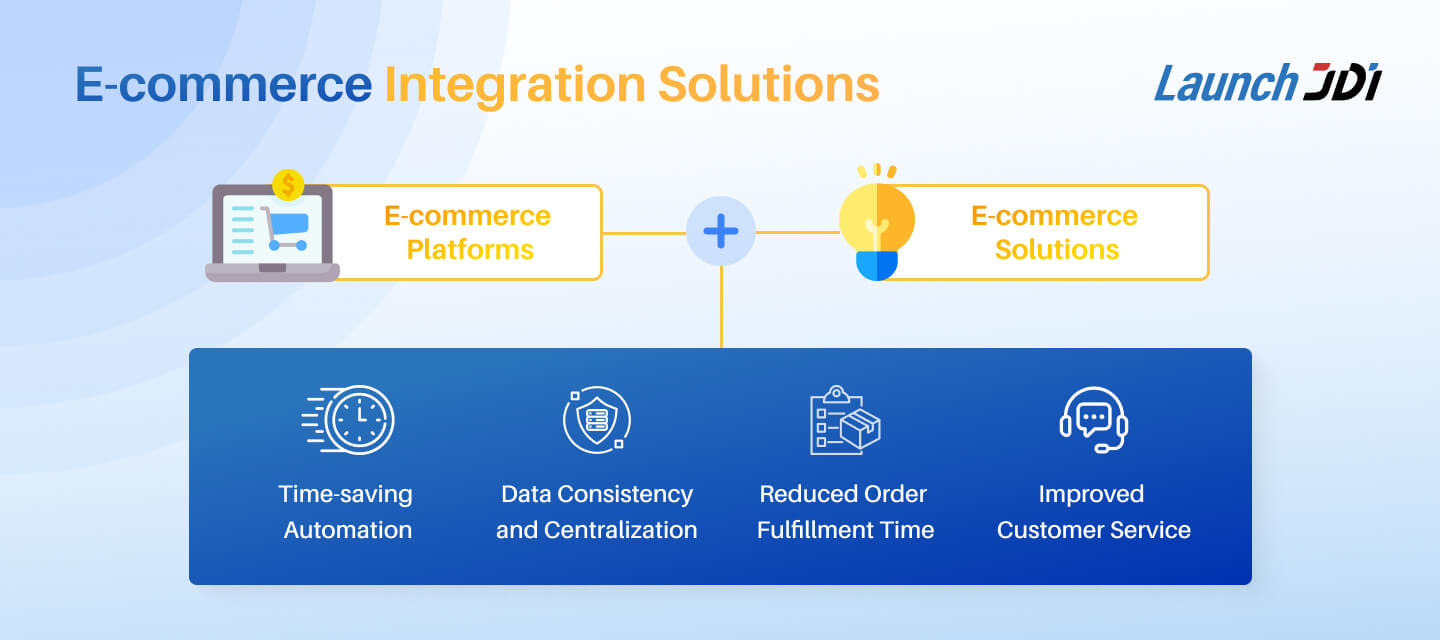E commerce in Vietnam has experienced remarkable growth over the past decade, with its market value projected to reach $32 billion by 2025. Boasting an impressive annual growth rate of 20%, it also stands as one of the fastest-growing sectors in Asia, outpacing traditional retail industries like supermarkets and convenience stores.
The country’s burgeoning digital economy has attracted significant attention from global key players and investors, all eager to capitalize on the lucrative business opportunities within the sector.
However, entering a new market takes time and effort. Businesses must navigate multiple challenges and obstacles to establish a foothold within the country. More importantly, they need to have a firm understanding of what makes Vietnam’s e-commerce sector truly special.
The Landscape of E-commerce In Vietnam
Considered as one of the rising e-commerce hot spots in Southeast Asia, alongside Indonesia and Malaysia, Vietnam recorded an impressive $20.1 billion in revenue from business-to-consumer (B2C) transactions on registered e-commerce platforms in 2023.
It is the fastest-growing country for online shopping within the region, with 2.2 billion products successfully sold and delivered through e-commerce channels. In 2022, the country saw 57 million individuals engaging in e-commerce for their shopping needs, showcasing a significant adoption rate among the population.
2024 is set to be another thriving year for Vietnam’s e-commerce platforms. Vietnam’s top five key players – Shopee, TikTok Shop, Lazada, Tiki, and Sendo, alone generated $US 9.4 billion in revenue, marking a remarkable 53.4% increase compared to 2022. In terms of consumer behavior, Vietnamese spent $1.3 billion on online shopping and 55% of survey respondents indicated their intention to increase spending in 2024.
Such impressive growth results from a combination of key drivers that have propelled Vietnam’s e-commerce landscape to new heights.
The Rise of Cashless Payments
E-commerce and digital payment systems are closely interconnected, with each driving the other’s growth. The COVID-19 pandemic has further accelerated the shift towards online shopping in Vietnam. With physical stores facing restrictions, consumers turned to e-commerce as a safe and convenient alternative.
Even after the quarantine period ended and the country returned to normal, the behavior of Vietnamese consumers has been permanently changed. In January 2024, non-cash transactions surged by 63.3% in volume compared to the same period last year. Meanwhile, internet-based transactions increased by 32.43% in value. Transactions using QR codes saw astounding growth, skyrocketing by 892.95% in volume and over 1,062% in value.
Young Consumer Demographic
Over the past decade, the Vietnamese consumer landscape has undergone a significant transformation, marked by explosive growth in the middle class. This shift has been largely driven by young, tech-savvy millennials and Gen Z individuals (born in 1997 or later), who are rapidly replacing previous generations as the primary drivers of online shopping.
A recent study revealed that 43% of Gen Z users in Vietnam accessed shopping apps daily, highlighting the significant role of mobiles in their shopping habits. According to the Hong Kong and Shanghai Banking Corporation (HSBC), Vietnam will surpass Malaysia and Thailand, becoming the second-largest Southeast Asian e-commerce market by 2030, just behind Indonesia.
Ease of Internet Access
Vietnam’s high internet penetration rate and widespread mobile usage form the bedrock of its e-commerce growth. As of 2024, there are 78.44 million internet users in the country, with an internet penetration rate of 79.1%.
This connectivity empowers consumers with the convenience of accessing a wide range of e-commerce services from any location and at any time. On average, Vietnamese users spend over six hours using the internet daily.
The rise of social commerce and influencer marketing has added a new dimension to the e-commerce landscape. Vietnam is home to 72.70 million social media users in 2024, making up 73.3% of the population.
In other words, social media platforms have become powerful tools for product discovery and purchase, with influencers playing a pivotal role in shaping consumer preferences and driving traffic to online stores.
Government Support
The Vietnamese government is actively promoting e-commerce activities among businesses, reducing the disparity between major cities and local areas, training digital-savvy talent, and fostering a sustainable digital ecosystem.
Under Decision No. 645/QD-TTg110, the government has approved the Master Plan for National E-commerce Development between 2021 and 2025. This plan provides an updated framework, strategies, and policies to enhance e-commerce activities and support the growth of the digital economy.
Concurrently, relevant ministries and agencies are strengthening the management and supervision of e-commerce operations, focusing on identifying violations and preventing tax losses.
National Digitization Plan For E-commerce In Vietnam
To propel Vietnam into the ranks of digitally advanced nations, Prime Minister Pham Minh Chinh has signed a decision to issue the committee’s work plan in 2024, aimed at fostering breakthroughs in socio-economic development within the 2021-2025 period.
The core focus lies in digital economy development, built upon four key pillars: the information technology industry, digitalization of economic sectors, digital management, and digital data. These pillars can significantly boost the e-commerce sector by improving digital infrastructure, promoting digital payment systems, and streamlining regulatory processes.
Ultimately, the success of the plan hinges on coordinated efforts from the government, businesses, and citizens to embrace the digital shift and foster a prosperous and inclusive future.
More Insights: Top Business Opportunities In Vietnam For 2024
Key Opportunities for E-commerce In Vietnam
Key Opportunity #1 – Business-to business (B2B) E-commerce
While B2C e-commerce in Vietnam has seen widespread success, B2B e-commerce remains relatively new but holds significant promise for investors due to its vast potential for growth and its reputation as a regional manufacturing hub.
Thanks to the “China plus one” supply chain diversification strategy, Vietnam has become a preferred location for manufacturing a variety of goods. Major products like electronics, footwear, and lifestyle items are extensively produced here, offering B2B platforms a unique opportunity to leverage this manufacturing base.
These platforms can provide a wide range of goods at competitive prices, tapping into the country’s production strengths. Despite this, B2B enterprises currently represent a small fraction of the e-commerce market compared to their B2C counterparts.
Moreover, Vietnam’s numerous free trade agreements (FTAs) significantly bolster the potential for B2B e-commerce. Agreements such as the European-Vietnam Free Trade Agreement (EVFTA), the Regional Comprehensive Economic Partnership (RCEP), and the Vietnam-Japan Economic Partnership Agreement (VJEPA), among others, offer substantial benefits for cross-border e-trading. These FTAs enable businesses to take advantage of preferential customs tariffs, making Vietnam an even more attractive destination for B2B e-commerce.
Key Opportunity #2 – Digital Payment Solutions
Digital payment services are on the rise with cashless transactions making up 63.3% of total payment transactions, while QR code payments skyrocketed by 892.95%, according to the State Bank of Vietnam (SBV).
Along with the Vietnamese government’s active promotion, many traditional stores now accept payments via e-wallets among primary options such as cash and credit cards. Consumers in Vietnam have a variety of payment options, including bank transfers, QR code scanning, and electronic wallets, making it faster and easier to pay online shopping bills.
The market’s growth potential represents a golden opportunity for fintech investors to establish collaborations with e-commerce platforms and provide a wide range of innovative financial solutions for online consumers in Vietnam.
Key Opportunity #3 – Social Commerce
As a subsector of e-commerce, social commerce is rapidly gaining traction as a more effective way for businesses to connect with customers. Platforms with substantial user bases like Facebook, Zalo, Instagram, and TikTok have integrated marketplace functions that enable users to buy and sell directly within the apps.
Notably, social commerce in Vietnam is expected to reach $US 4.5 billion in value by the end of this year, with a CAGR of 31.1% within the 2024-2029 period. Beyond the promising market growth, Vietnam’s unique consumer behaviors are characterized by a high level of social media engagement, with consumers frequently interacting with brands and making purchasing decisions based on social media content. Additionally, the trust placed in peer reviews and influencer recommendations further boosts social commerce, as consumers often rely on these sources for product validation.
We foresee that there will be great demand for innovative services and solutions to help drive the explosive growth of social commerce in Vietnam, representing a significant opportunity for investors.
Key Opportunity #4 – Cross-Border E-commerce
Cross-border e-commerce in Vietnam has experienced robust and steady growth over the past few years, with an impressive annual growth rate of 20%, ranking it among the top five countries globally in terms of trade growth.
Vietnam’s strategic location enhances its cross-border e-commerce network, extending connections from China to Thailand, Cambodia, Laos, and beyond. The country’s access to multiple ports and an extensive coastline offer ideal distribution alternatives for businesses looking to import or export goods. These logistical advantages and an increasingly digital-savvy population create a fertile ground for cross-border e-commerce to flourish.
The Vietnamese government has also been proactive in supporting this growth through favorable policies and investments in digital infrastructure. Initiatives such as the National Digital Transformation Program aim to boost e-commerce by improving internet connectivity, streamlining customs procedures, and enhancing payment systems.
Key Opportunity #5 – E-commerce Enabling/ Integration Solutions
Beyond the traditional e-commerce participants, there are significant opportunities for e-commerce enablers and supporters to tap into this dynamic market. These players can enhance online marketing and sales strategies while introducing innovative experiences to customers.
For instance, ShopBack has expanded its platform to include more D2C (Direct to Consumer) websites such as Samsung, Innisfree, Lancôme, and Kiehl’s, offering a diversified and rewarding shopping experience for users in Vietnam. This approach not only broadens the range of products available but also attracts a wider customer base by providing enticing incentives and rewards.
Another exciting development is the adoption of AR and VR solutions to elevate the online shopping experience. Technologies like virtual try-ons and 3D product visualizations allow consumers to engage with products in a more interactive and immersive way. This is particularly valuable in the context of the recent pandemic, where widespread job losses and wage cuts in Vietnam led to a sharp decrease in disposable income.
As people become more cautious with their spending, AR and VR technologies have provided businesses with a powerful tool to capture consumer interest and enhance their shopping experience. By allowing customers to virtually try products, businesses can build trust and drive sales more effectively.
Seize the chance: Best Market Entry Strategy For Vietnam In 2024
Conclusion
The e-commerce market in Vietnam is rapidly evolving, driven by high internet penetration, widespread mobile usage, and a young, tech-savvy population. As the country continues on its path of digital transformation, the landscape is ripe with opportunities for stakeholders who can innovate, adapt, and leverage the country’s evolving e-commerce ecosystem.
However, entering a new market is never straightforward. Businesses looking to establish a foothold in Vietnam must be prepared to face competition from both local and international players who have already established a strong presence. They also need to gain a firm understanding of Vietnamese consumer behavior and preferences, stay abreast of regulatory and compliance requirements, and adapt to the unique logistical and infrastructural landscape.
To overcome these hurdles, Hiverlab, a pioneering infocomm media technology innovation company has partnered with Launch JDI to ease up their market expansion journey into Vietnam. Read their full story here!
_______________
Read our next curated insights to discover key steps on how to: Set Up A Business In Vietnam – Complete Guide


